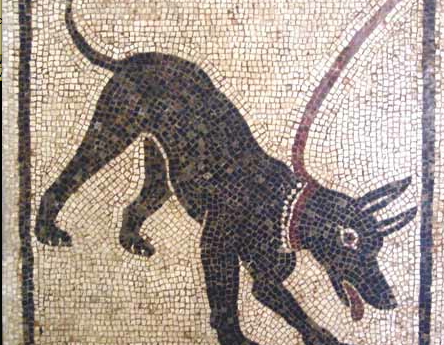 One of the most famous mosaics at Pompeii
One of the most famous mosaics at Pompeii
The background
Next spring, the British Museum is set to put on a blockbusting exhibition about Pompeii, and will draw on the collections in Naples and Pompeii, and will show 250 objects, many of which have never been outside Italy before, including marbles, ivory panels, and a wall painting of Terentius Nero, a baker. There are some wooden pieces of furniture from Herculaneum, carbonised by ash, including a stool, a bench, a chest, and a baby’s crib. The show promises to be huge; commentators are already salivating over its implications for our understanding of civilization.
“Apart from better sanitation and medicine and education and irrigation and public health and roads and a freshwater system and baths and public order, what have the Romans done for us?” Monty Python, quoted by Harry Mount.
The eternal human element
In Pompeii, said Harry Mount in The Telegraph, the “biggest crowds” are around the “poignant plaster casts of the dead Romans,” with whom one feels “an immediate, agonising human sympathy.” It’s “that human element” which makes Pompeii “so eternally compelling.”In one of the plaster clasts, two parents with their children “are huddled together under the stairs of their villa, frozen in fear – and frozen for all time.” There’s also “the most famous of all” – “ a dog.” Though Pompeii was first excavated in 1748, much remains “unexplored.” This is the “archaeological gift that goes on giving” – this year the Stabian Baths opened, with their wrestling school, swimming pool and bowling alley. As you go round the show, you’ll be “reminded of the Roman contribution to modern civilization.” They were “astonishingly sophisticated.” The fact of the matter is, “there is no hiding place when the earth unleashes its full destructive power – as the British Museum’s exhibition will show, in full heart-stopping style.”
Downton Abbey take on the Romans
Ben Hoyle in The Times said it will be a “Downton Abbey take on the Romans” which will “explore the soap opera of everyday life across the classes.” According to Niall MacGregor, the curator, Pompeii and Herculaneum “suddenly became immortalised, a bit as though Swindon and Poole are all that remains of modern Britain, or Brighton and Hove.”
Puns aplenty – and the thrill of history
Ben MacIntyre, also in The Times, said it was only very rarely that “history is frozen”, but when it does it’s thrilling. The ruins of Pompeii “offer a snapshot of Roman daily life … a more vivid and immediate picture than any work of classical literature or poetry.” They took their “humour seriously” – Wine jars have “what may be the earliest punning advertising tag: “Vesuvinum” wine, combining the word Vesuvius with the Latin for wine, vinum.” Then there’s the graffiti – “frequently vulgar, sometimes filthy, often funny and occasionally moving.” What’s so poignant about it is that as we look at these “bustling streets, busy shops and domestic scenes”, none of the people had any “inkling that they would become history.”

